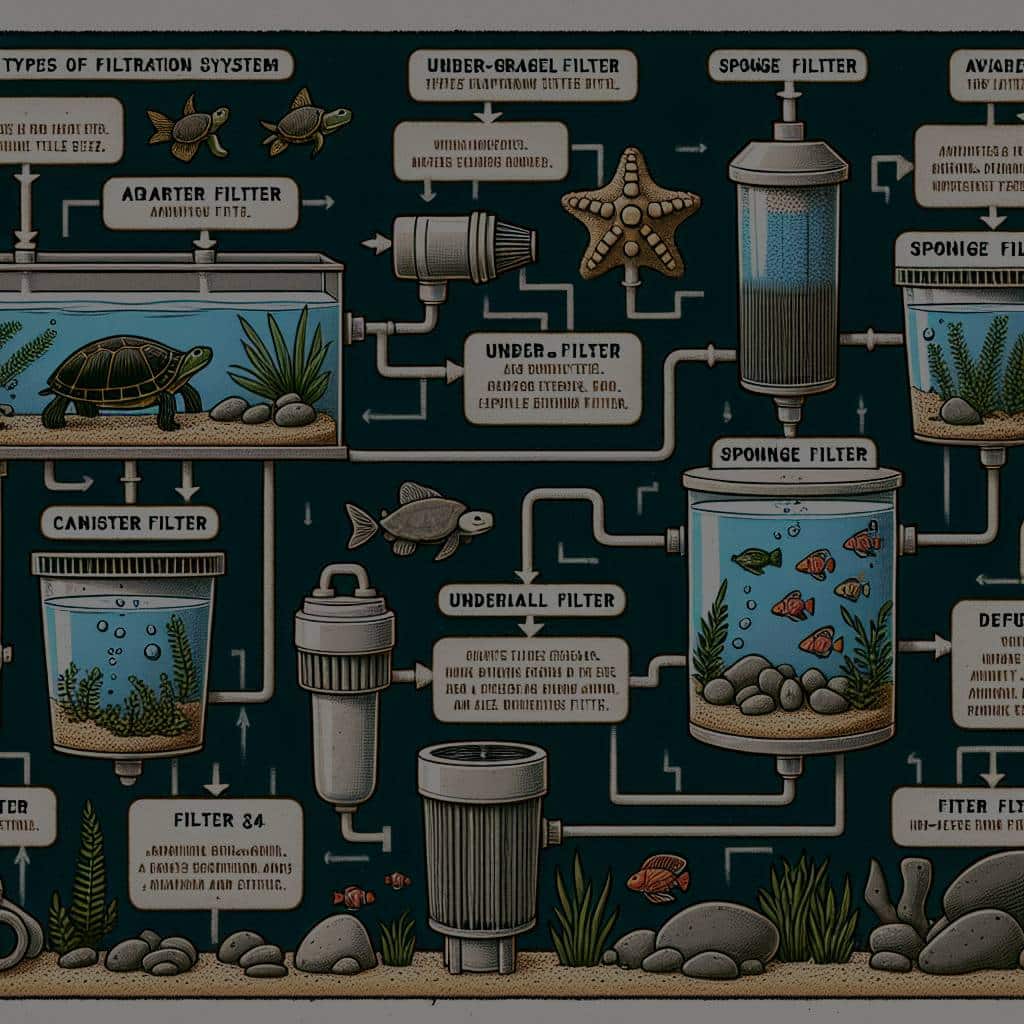Keeping a turtle as a pet can be a rewarding experience. Yet, it also brings along certain responsibilities, one of them being choosing the right filter for your turtle’s tank. A proper filtration system ensures that the water in your turtle’s aquarium stays clean by removing waste products and fostering beneficial bacteria’s growth. This article will guide you through the ins and outs of selecting the best filtration system to keep your turtle’s habitat healthy and clean.
Understanding the Basics of Filtration
Before embarking on the journey of selecting a filter, it is crucial to understand the basics of filtration. A filtration system for a turtle tank or an aquarium typically consists of three components: mechanical, biological, and chemical filtration. Each of them plays a unique role in maintaining the cleanliness and healthiness of the water.
In parallel : What Are the Safest Ice-Melting Products to Use Near Dogs?
A mechanical filter physically captures debris and solid waste, while the biological filter deals with harmful toxins produced by fish, turtles, and decaying organic matter in the tank. The chemical filter, on the other hand, is responsible for neutralizing harmful chemicals in the water.
It’s essential to choose a filtration system that combines all three types to ensure comprehensive water cleaning in your turtle’s habitat.
Also to see : How to Keep a Dog with High Energy Entertained Indoors?
Analyzing Different Types of Filters
With an understanding of the basics of filtration, let’s delve into the different types of filters available in the market. Broadly, they can be divided into three categories: canister filters, power filters, and internal filters.
Canister filters are known to provide excellent filtration capacity and are often used in large aquariums or tanks. These filters force water through filter media under pressure, ensuring a thorough cleaning. They’re also versatile, allowing you to customize your filtration media.
Power filters, also known as HOB (Hang On Back) filters, hang on the back of the tank and provide a combination of mechanical and biological filtration. They’re easy to maintain and are a popular choice for small to medium-sized tanks.
Internal filters, as the name suggests, are fully submersible filters that are placed inside the tank. They are generally recommended for small tanks or as a secondary filtration system in large tanks.
Considering Tank Size and Filter Flow Rate
When selecting a filter, you should consider the size of your turtle’s tank and the filtration system’s flow rate. The flow rate refers to how quickly the filter can clean the water in the tank, often measured in gallons per hour (GPH).
A good rule of thumb is to choose a filter with a flow rate that can filter the entire volume of the tank at least three to four times per hour. For instance, if you have a 30-gallon tank, you should aim for a filter with a flow rate of 90-120 GPH.
Remember that turtles produce more waste than fish, and a strong flow rate is necessary to keep the water clean and healthy for your turtle.
Choosing the Right Filter Media
The term ‘filter media’ refers to the materials within the filter that help clean the water as it passes through. These can range from foam pads and bio-balls for mechanical and biological filtration, to activated carbon and resins for chemical filtration.
Choosing the right filter media will ensure that your filtration system works effectively. For instance, for biological filtration, ceramic rings or bio-balls are excellent as they provide a large surface area for beneficial bacteria to grow.
Maintenance and Cleaning of the Filtration System
Lastly, while choosing a filtration system, consider how easy it is to clean and maintain. Over time, filters can get clogged with waste and require regular cleaning to function efficiently. This is particularly true for mechanical filters that trap physical debris.
Canister and power filters are ideal as they are easy to clean and maintain, unlike internal filters which can be a bit more complicated due to their placement inside the tank. An easy-to-maintain filtration system will save you time and effort in the long run.
Choosing the right filtration system for your turtle’s tank is crucial to ensure a healthy and safe environment for your pet. By understanding the basics of filtration, analyzing different types of filters, considering the tank size and filter flow rate, selecting the right filter media, and contemplating the maintenance and cleaning of the system, you can make an informed decision that best suits your turtle’s needs.
Paying Attention to Water Level and the Noise Level
Equally as important to consider when selecting a filter is the water level and noise level of the filtration system. Turtles are semi-aquatic creatures, which means they divide their time between land and water. The water level in a turtle tank should be sufficient enough to allow the turtle to swim comfortably, but also shallow enough for the turtle to reach the basking area easily. A filter designed for turtle tanks will generally work well at low water levels, which is essential considering the semi-aquatic nature of turtles.
Another factor that doesn’t get much attention is the noise level of the filter. While turtles may not be as sensitive as fish to noise and vibrations, a quiet environment will be less stressful for your pet. Filters such as the canister filter and HOB filter are usually quiet and efficient, making them a good choice for maintaining a conducive environment for your pet turtle.
Filter noise can also affect you as a pet owner. A noisy filter can be a nuisance, especially if the turtle tank is situated in a living room or bedroom. So, the best filter would be one that is both efficient in keeping the tank water clean and operates quietly.
Understanding the Importance of a Filtration System for a Healthy Turtle Habitat
In conclusion, a well-chosen filtration system is a cornerstone of a healthy and clean turtle habitat. A good filter isn’t just about keeping the water clean. It plays a vital role in maintaining the overall health of your turtle, including supporting beneficial bacteria and neutralizing harmful toxins.
The type of filter to choose depends on several factors: the size of your turtle tank, the desired flow rate, the type of filter media, and the ease of maintenance. Canister filters, for instance, are excellent for large tanks, while power filters work best for smaller to medium-sized tanks.
Always keep in mind that the filter media within the system needs to be selected carefully to ensure efficient mechanical, biological, and chemical filtration. Furthermore, maintenance of the filtration system is crucial to its longevity and effectiveness, emphasizing the importance of selecting a system that is easy to clean and maintain.
Considering the water level and noise level produced by the filtration system is equally important. Turtles being semi-aquatic, the filter must effectively clean the water at lower levels. Also, a quiet filter ensures a stress-free environment for your turtle and is less likely to be a disturbance in your living space.
In essence, choosing the right filtration system for a turtle habitat is not a decision that should be taken lightly. Investing effort and time into understanding these aspects will pay off in the long run with a healthy and happy pet turtle. Remember, a clean habitat is a happy habitat.











